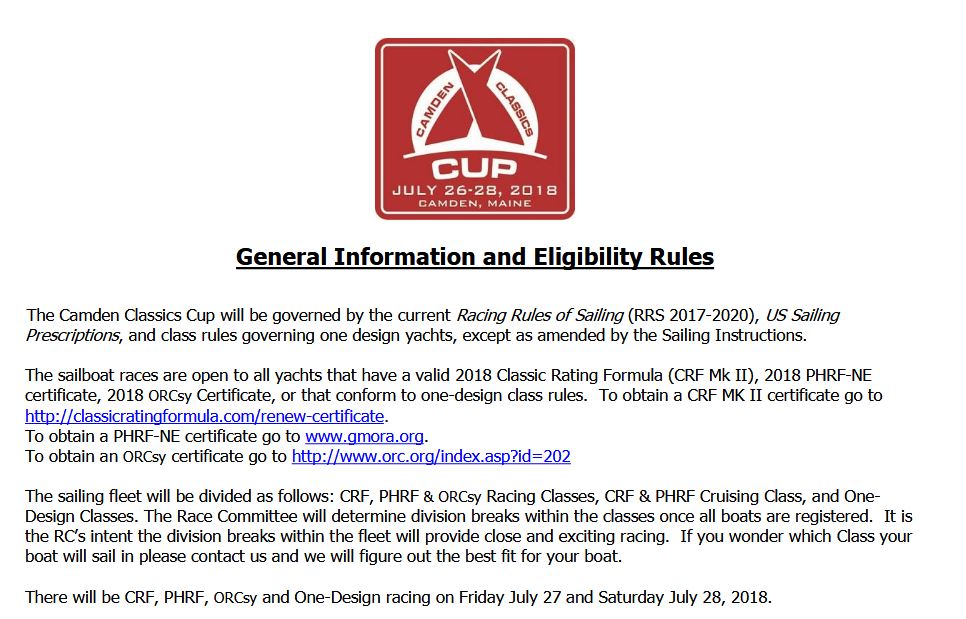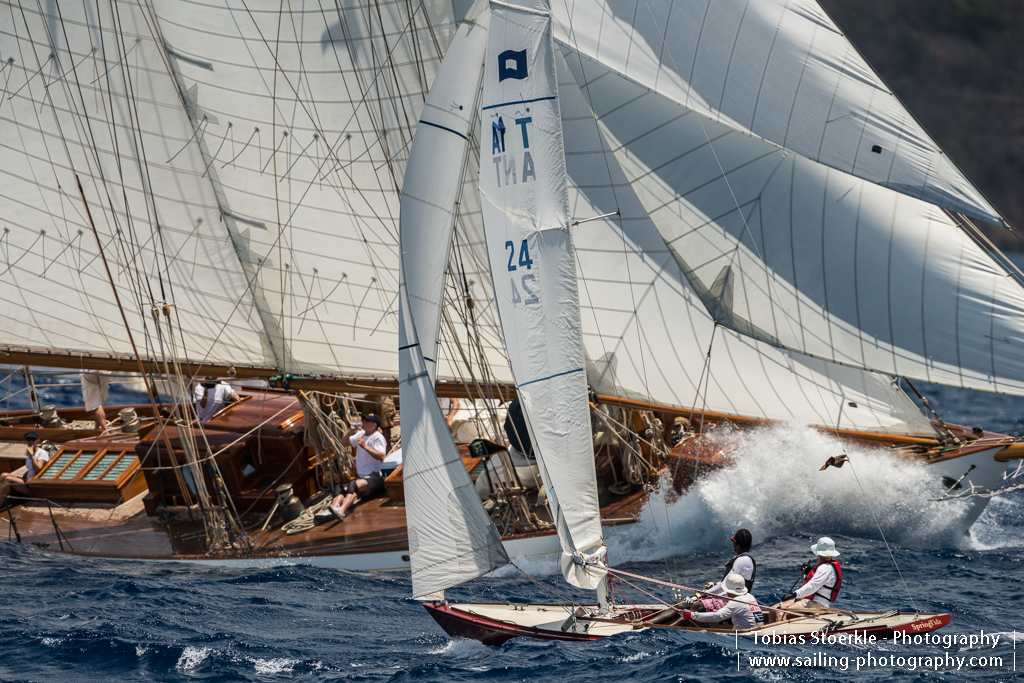The Classic Racing Issue #2: The Better Notice-of-Race Association?

Recently, we spent a pleasant evening at a Classic Yacht Owners Association, or CYOA, event in Newport, RI. We stopped down to this terrific event to help tell the Spirit-of-Tradition story. And to participate on a panel discussion around what it means to sail as a Corinthian sailor in the classic regatta circuit.
We were excited to see how the CYOA is doing in building consensus among its diverse membership of classic, modern classic and Spirit-of-Tradition vessels. We fully expect Managing Director Bill Lynn and members of the executive committee, like Charles Townsend and Timothy Rutter, to be instrumental in driving the evolution in the Vintage, Classic and SoT racing scene. Good work is being done by all; we also have a ways to go.
Truth is, the CYOA is herding a lot of floating classic cats. And our engagement with it is aimed now at how we could help shape the conversation around making the racing in this diverse fleet better.
It seems that’s all about consolidating similar regatta events when it comes to Notices of Race. For starts.
While each individual regatta brings a distinct flavor to their event, we’d see the opportunity for CYOA as this: to carefully work with each classic event to communicate a more standardized NOR.
A Better NOR at The Camden Classics

The right Notice of Race, with themes consistent across all these regattas, would establish a common benchmark for setting entrants’ expectations.These consistent notices would contrast with the current scene, where the distinctions used by each regatta to divide yachts into classes differ, sometimes drastically, and often without sound performance or design reasoning.
Already, we are finding some success in a such a standard, high quality NOR. For example, take the following breakdown of 2 divisions in the coming 2018 Camden Classics Cup. We are finding these rules offer the kind of logical and inclusive yacht-racing experience that so many classic racers call for.
Here is the exact language:
I: The CRF Division will be open to qualifying yachts with valid 2017 CRF Rating Certificates. Classes in the CRF fleet will be;
-
Vintage – Designed prior to 31/12/1949
-
Classic – Designed prior to 31/12/1975
-
Gaff & Schooner – Vessels rigged with gaffs, or as schooners.
There may be both spinnaker and non-spinnaker racing fleets within each class· Modifications from original design will be evaluated and rating adjustments assessed. Adjustments may be assessed for modifications including, but not limited to, sail, spar and rigging materials, ballast changes, rudder changes.
Numerous or extensive modifications may at some level require assignment to a different class, at the discretion of the race committee.
II: The PHRF Division will be open to qualifying monohull yachts with valid 2017 PHRF-NE racing handicap certificates. Classes in the PHRF fleet will
-
Spirit of Tradition
-
Spinnaker
iii. Non-Spinnaker
-
One Design
The Spirit of Tradition Class will be open to any yacht with a valid PHRF-NE 2016 rating and fitting the following criteria:
-
The yacht design is dated 1975 and later — this date is currently recognized, prior to which any yacht is considered as “Classic” or “Vintage”.
-
The yacht is built of any material, or combination of materials, in any method, by any builder.
-
The design must employ some fundamental aesthetic detail and hull shaping that are inspired from classic and vintage yacht, or workboat, architecture.
-
There must be an appreciation of the vessel as an evolution of a tangible “Classic” style.
-
Modern sails, rigging, running rigging and spars are encouraged, but not required.
-
Modern sailing/deck hardware is encouraged, but not required.
All boats to enter an SOT racing event will be approved by the racing committee, while observing these guidelines.
What Problems Does a Better Notice Solve?

Quite a lot actually: These class divisions help define a race by placing entrants into qualified categories and grouping up boats that fit best together. Because we’re racing boats from a wide range in age, prioritizing entries by design era is the first logical step. To group like boats, the best place to start is with design date ranges: This priority recognizes that technology evolves and makes boats faster, based on when they were designed, not when they were built. A Concordia yawl built in 1940 is equally as fast as one built in 1972 — let’s not split them into two groups.
The rule also allows for real leeway for a race committee to assess unique issues for further rating penalties; but it does not overburden the event with too much penalty baggage. We wouldn’t want to end up racing a Concordia yawl against a boat like Hoi An, our 50-foot modern-classic speedster, for the same reasons we wouldn’t want the classic Finisterre racing against a Farr 40. But, more importantly, we do not want to unfairly penalize a boat’s handicap if her owner chooses to purchase a more modern rig; nor would we want to kick a boat into an unsuitable class due to rebuilding the shape of a rudder or purchasing new sails.
Like boats with like boats is important, and boats grouped by age or vintage is paramount. And a well-founded logic based on design data for assessing real-world rating performance is the magic that keeps handicap racing fun.
Running a race that everyone understands from the moment the rules are sent out is the kind of magic organizational wand any great race committee deserves. That’s why we see the newly-founded CYOA as being instrumental in consolidating agreement among owners and race organizers into one forum that shares a vision for making racing consistent from one event to another.
A worthy goal, indeed.